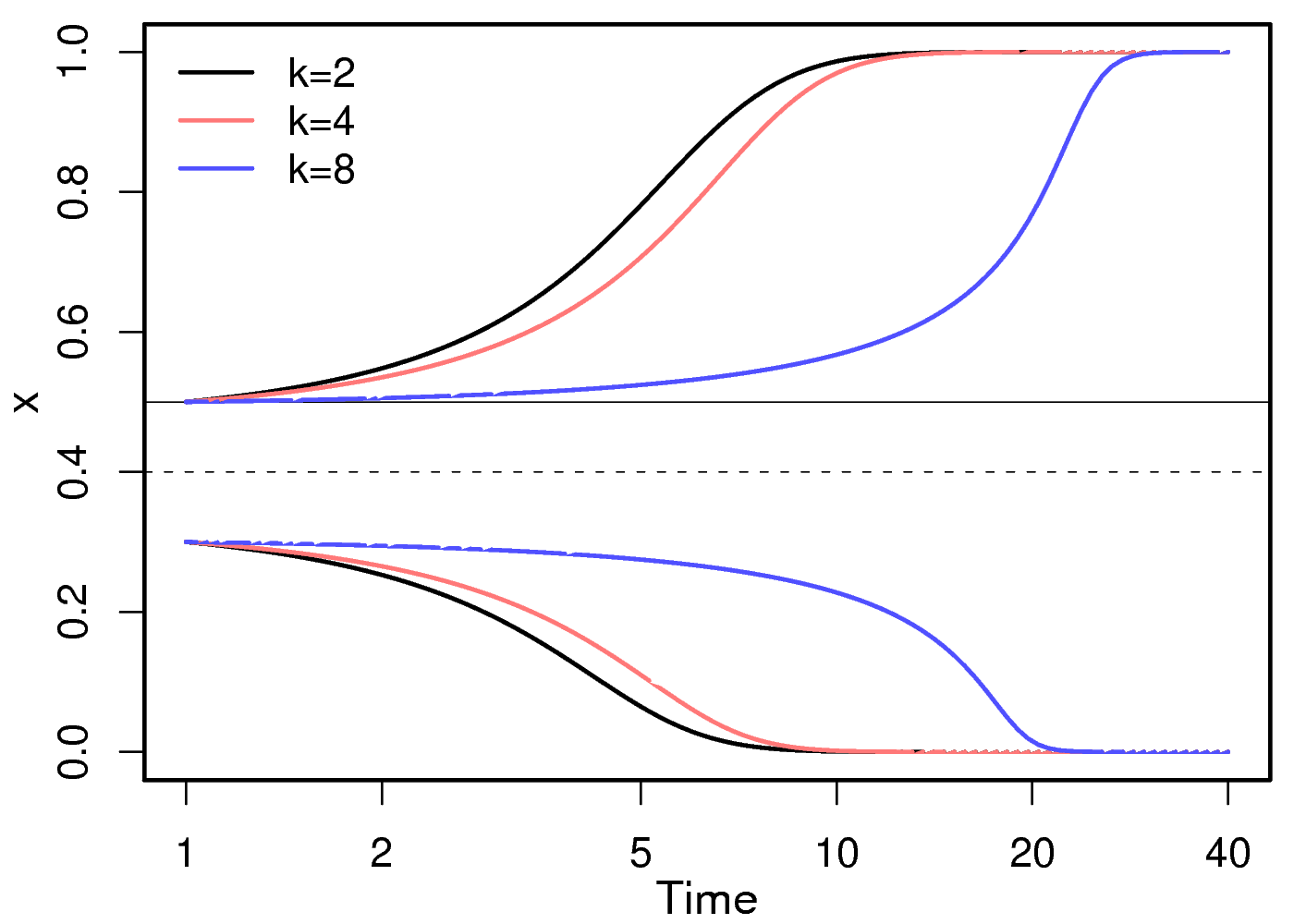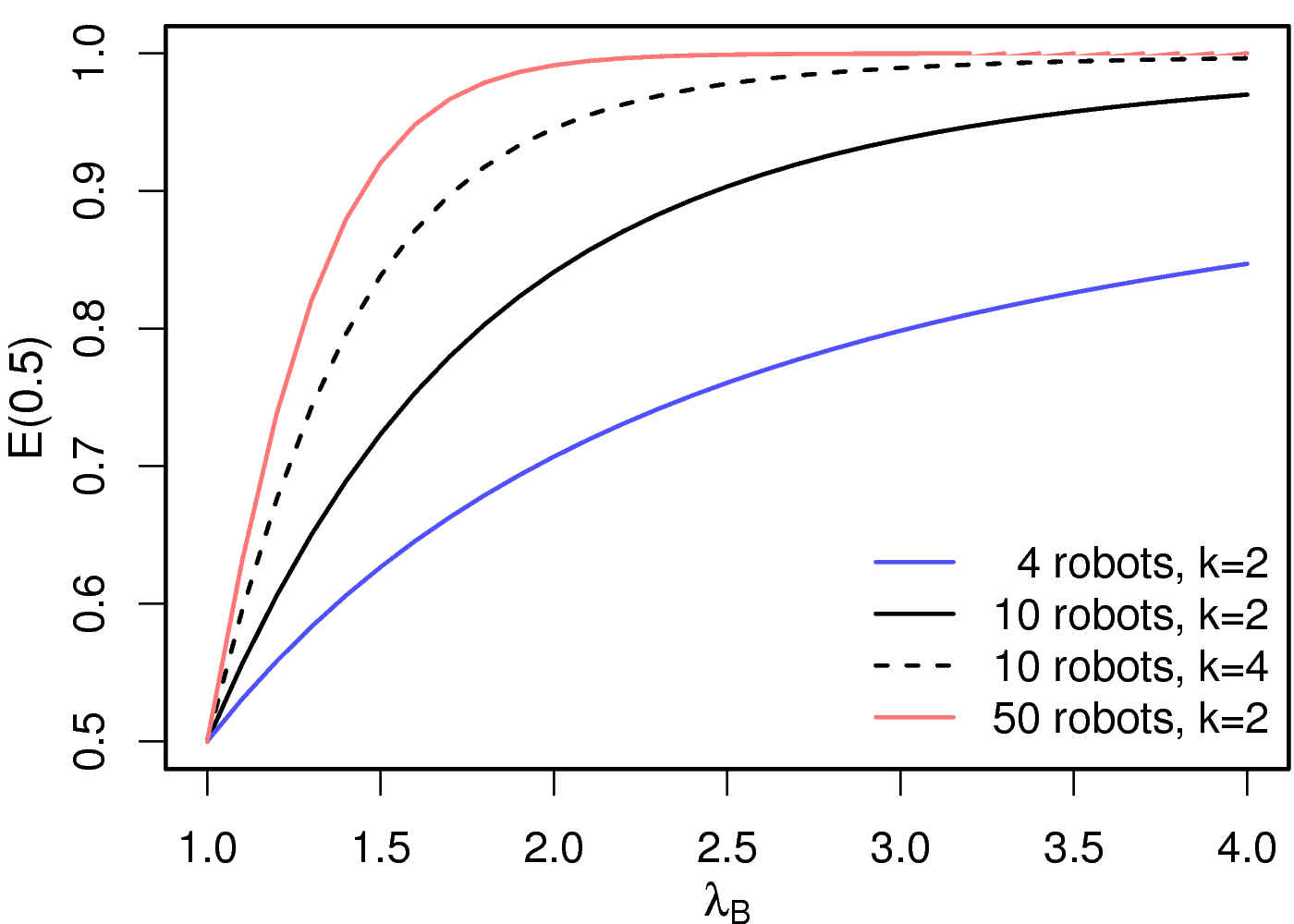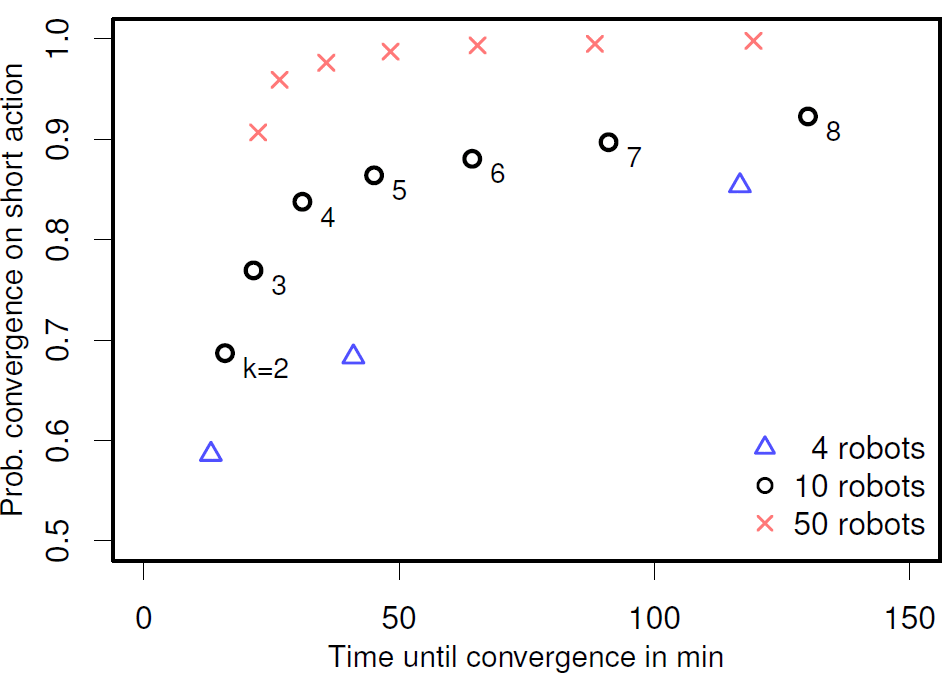by Alexander Scheidler, Arne Brutschy, Eliseo Ferrante, and Marco Dorigo
October 2011
In this paper we propose a collective decision making method for swarms of robots. The method enables a robot swarm to select, from a set of possible actions, the one that has the fastest mean execution time. By means of positive feedback the method achieves consensus on the fastest action from the initially heterogeneous beliefs of the robots. We study two analytical models of the decision making method to understand the dynamics of the consensus formation process. Moreover, we verify the applicability of the method in a real swarm robotics scenario. To this end, we conduct three sets of experiments that show that a robotic swarm can collectively select the shortest of two paths. Finally, we use a Monte Carlo simulation model to study and predict the influence of different parameters on the method.

Figure S1. Example trajectories of the continuum model for different memory sizes k. The upper trajectories start at x=0.5 (unbiased swarms) and the lower start at x=0.3. The dashed line marks the critical fraction 0.4.

Figure S2. Probability E(x) to converge to action A depending on the difference in action execution times for different memory sizes k and swarm sizes N.
Example run of Experiment I:

Figure S3. Probability to converge to action A depending on the memory size k for different swarm sizes.